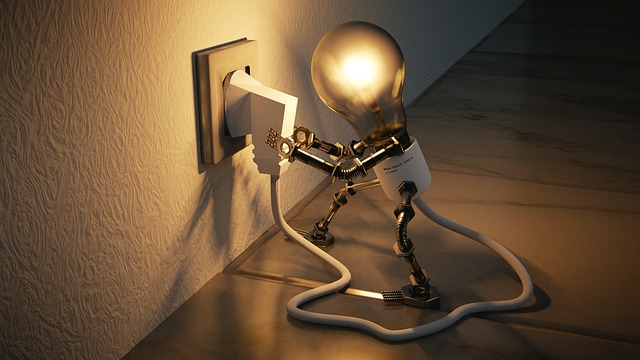Reducing energy consumption doesn’t have to mean giving up comfort in your home or workspace. With simple adjustments and smart solutions, you can save energy, lower your bills, and still enjoy a cozy and functional environment. Here are practical ways to achieve energy efficiency without compromising your lifestyle.
1. Upgrade to Energy-Efficient Appliances
Modern energy-efficient appliances use significantly less electricity than older models.
Tips for Choosing Appliances:
- Look for Energy Star-certified products.
- Opt for appliances with high-efficiency ratings.
- Use appliances like refrigerators, dishwashers, and washing machines during off-peak hours to save on energy costs.
While these upgrades might involve upfront costs, they quickly pay off through reduced energy bills.
2. Optimize Heating and Cooling Systems
Heating and cooling account for a significant portion of energy consumption.
How to Reduce HVAC Usage:
- Install a programmable thermostat to adjust temperatures when you’re away or asleep.
- Regularly clean and maintain your HVAC systems for efficiency.
- Seal windows and doors to prevent drafts.
Supplement your HVAC system with energy-saving techniques like ceiling fans, which distribute air more evenly.
3. Use Smart Lighting Solutions
Switching to energy-efficient lighting can drastically cut down on electricity usage.
Energy-Saving Lighting Tips:
- Replace incandescent bulbs with LEDs, which use up to 75% less energy.
- Install motion sensors in low-traffic areas to ensure lights are only on when needed.
- Use dimmers to control the brightness of lights and save energy.
Natural light is another excellent energy-saver—open your blinds during the day to reduce reliance on artificial lighting.
4. Implement Energy-Saving Habits
Small changes in daily habits can make a big difference.
Simple Energy-Saving Habits:
- Turn off appliances and lights when not in use.
- Unplug devices like chargers and electronics when they’re not actively being used.
- Use cold water for laundry and air dry clothes whenever possible.
These habits require minimal effort but can have a long-term impact on energy consumption.
5. Leverage Renewable Energy Sources
Switching to renewable energy can reduce your dependence on traditional power sources.
Renewable Energy Options:
- Install solar panels to generate electricity for your home.
- Explore wind energy solutions if feasible in your location.
- Invest in community solar programs if individual installation isn’t an option.
Renewable energy can lower energy bills and contribute to environmental sustainability.
6. Insulate Your Home Properly
Proper insulation helps maintain a consistent indoor temperature, reducing the need for heating or cooling.
Key Areas to Insulate:
- Walls, floors, and ceilings to minimize heat transfer.
- Attics and basements to prevent energy loss.
- Pipes and water heaters to conserve heat in water systems.
By ensuring your home is well-insulated, you can maintain comfort while using less energy.
7. Upgrade to Smart Home Technology
Smart home devices automate energy-saving measures, making them easy and convenient.
Examples of Smart Technology:
- Smart thermostats: Optimize heating and cooling based on your schedule.
- Smart plugs and power strips: Automatically turn off unused devices.
- Home energy monitors: Track your energy use and identify savings opportunities.
These technologies provide insights into your energy consumption, helping you make informed decisions.
8. Adopt Water-Saving Techniques
Heating water requires significant energy, so reducing water usage also saves electricity.
How to Save Water and Energy:
- Install low-flow showerheads and faucets.
- Use energy-efficient water heaters.
- Fix leaks promptly to prevent unnecessary water and energy waste.
Efficient water management complements other energy-saving efforts.
9. Invest in Window Treatments
Windows play a significant role in heat loss and gain, affecting your energy needs.
Energy-Saving Window Solutions:
- Use thermal curtains or blinds to block out heat in summer and retain it in winter.
- Apply window films to reduce UV and infrared heat.
- Consider double-pane or energy-efficient windows for long-term savings.
Well-treated windows create a comfortable indoor environment with less energy.
10. Regular Energy Audits
Conducting energy audits can reveal hidden inefficiencies in your home or office.
What to Look For:
- Leaks in ducts or windows.
- Inefficient appliances or outdated systems.
- Opportunities to switch to energy-efficient practices.
Professional audits or DIY assessments ensure you stay on top of energy-saving opportunities.
Get Started with Sustainable Energy Savings
Reducing energy consumption while maintaining comfort is achievable with the right strategies and tools. If you’re ready to take the next step in energy efficiency, contact us to explore personalized solutions for your home or business. Start saving energy and money today!


 Your Local Reliable Electrician That You Can Trust
Your Local Reliable Electrician That You Can Trust 